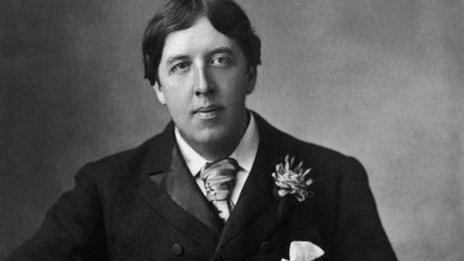MoJ plans to dig for Henry I's remains at Reading Prison
- Published
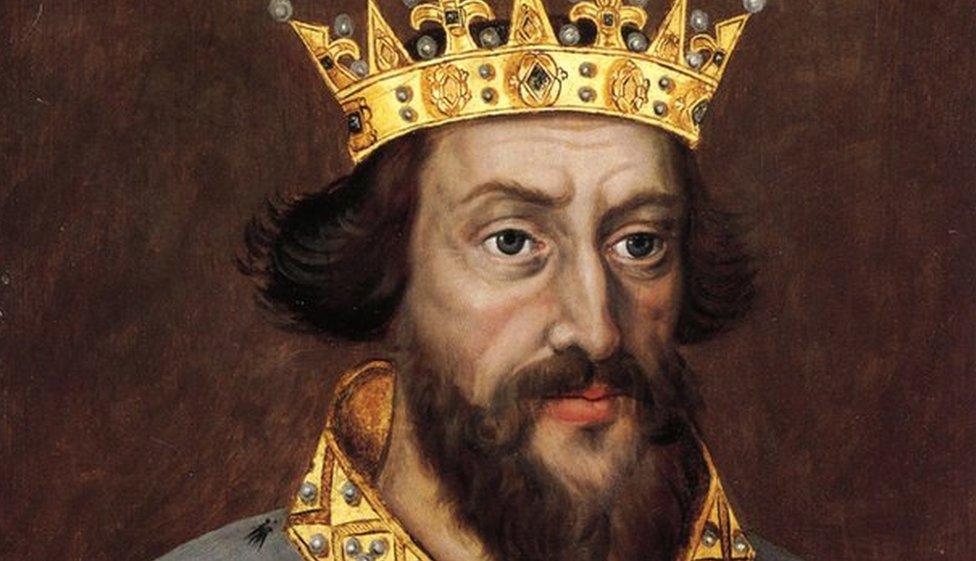
Henry I was the son of William the Conqueror and founded Reading Abbey in 1121
An archaeological dig could take place around Reading Prison in preparation for its sale.
The Ministry of Justice has applied to dig 12 test pits around the Victorian prison to search for remains of the town's medieval abbey.
The prison was shut in 2013 and the Ministry of Justice has had plans to sell it for development ever since.
Survey work began in June to find the tomb of King Henry I, thought to be in the remains of Reading Abbey.
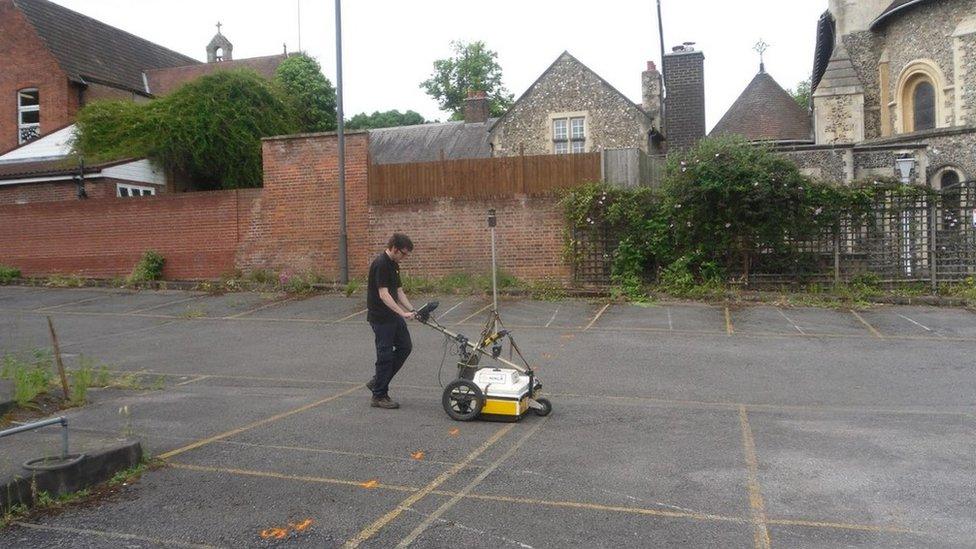
Archaeologists are using radar on land near Reading Prison to generate computer images of what lies underground
Reading Prison, based in the Reading Abbey precinct, famously housed writer Oscar Wilde.
Henry I, son of William the Conqueror, founded Reading Abbey in 1121.
After his death in Normandy in December 1135, his body was taken to Reading sewn into a bull's hide. He was laid to rest in January 1136.
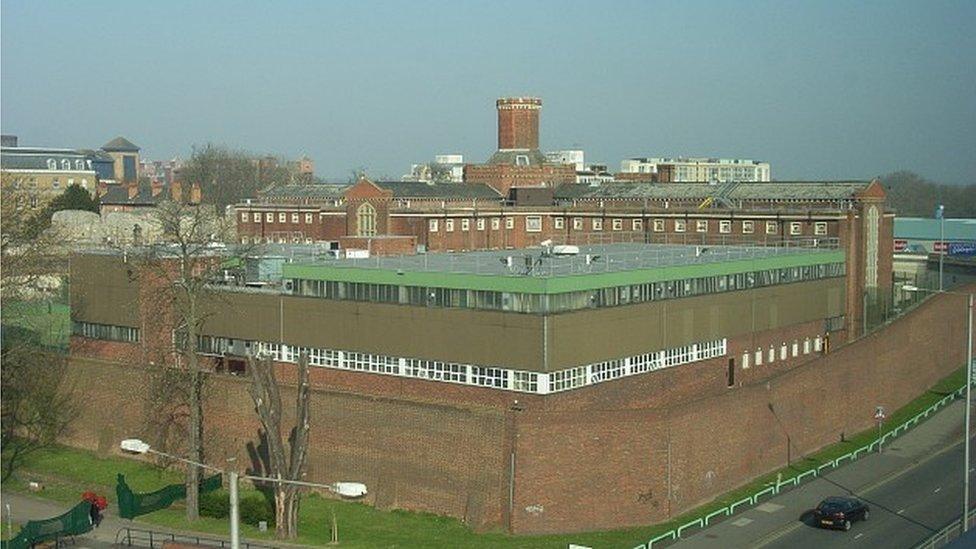
Reading Prison closed in 2013
The abbey was partly destroyed during the dissolution of the monasteries by Henry VIII, but there is no definite record of what happened to Henry I's remains.
A grant £1.77m of lottery funding will allow the remains of Reading Abbey to be re-opened to the public by 2018.
The Ministry of Justice has had difficulty selling the prison due to its historical heritage.
The 12 test pits will allow archaeologists to ascertain what parts of the historic abbey are underneath the gaol.
- Published18 June 2016
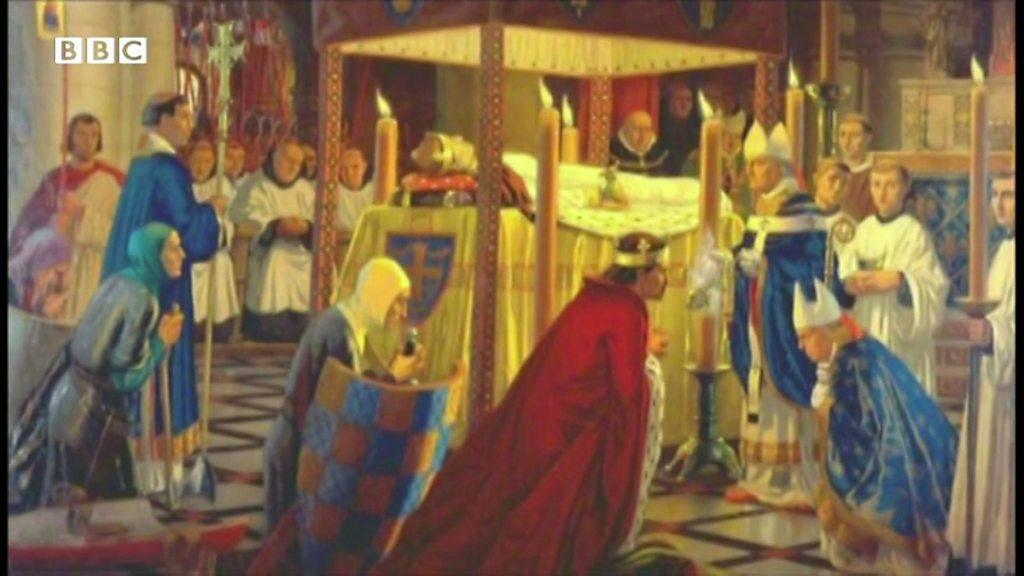
- Published12 June 2016
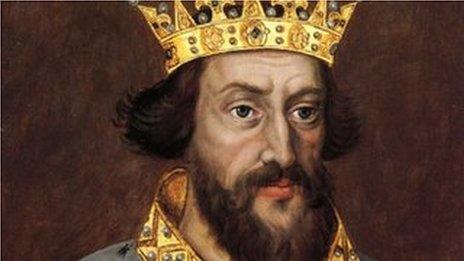
- Published4 January 2016
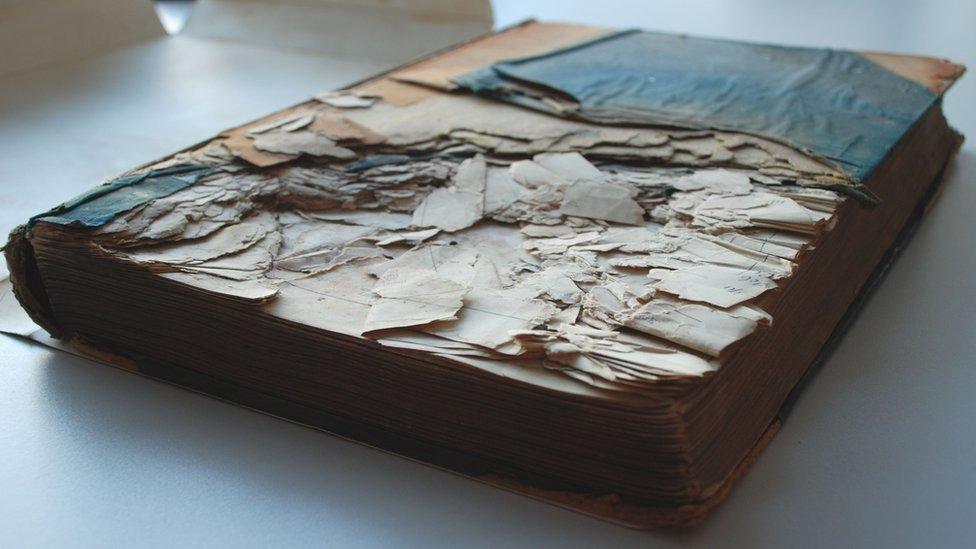
- Published15 December 2015
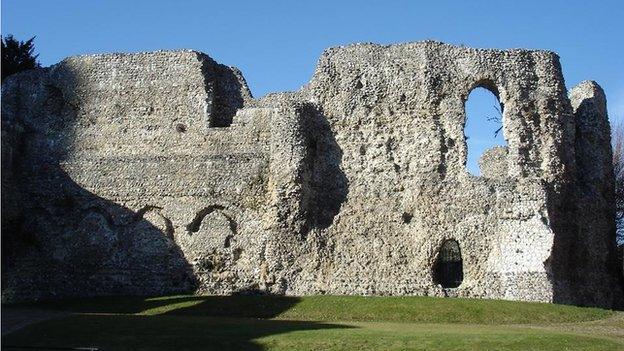
- Published6 March 2014
